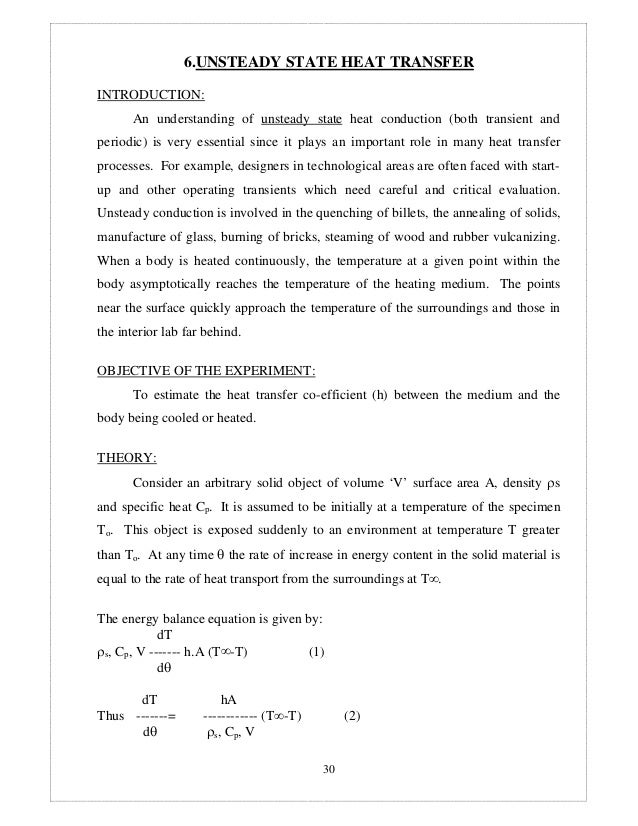Unsteady State Heat Transfer Experiment Conclusion

Unsteady state heat transfer heat transfer processes are prominent in engineering due to several applications in industry and environment.
Unsteady state heat transfer experiment conclusion. It has been extensively applied in the fields of engineering related to heat transfer measurement such as the aerospace atomic. As steam passed through the jacket thermal energy heated the rod and created a temperature gradient. Bi biot number hv ak 0 07 0 1 using eqn 5 then t 29 1 3 when internal resistance is not negligible. Surface heat transfer coefficient provided is an average value.
These objectives were met by heating several rods and allowing them to cool through free convection in air free convection in water and forced convection in water while monitoring their change in. The inverse heat conduction problem ihcp refers to the inversion of the internal characteristics or thermal boundary conditions of a heat transfer system by using other known conditions of the system and according to some information that the system can observe. The apparatus consisted of a steam jacket and an aluminum rod. The objectives of this experiment were to determine the thermal conductivity and local heat transfer coefficients of an aluminum rod.
Aim of this experiment this experiment aims to observe the heat transfer phenomenon take place durinh the the time to reach unstable conditions to stable conditions procedure follow the basic operating procedure. Heat transfer is central to the performance of propulsion systems design of conventional space and water heating systems cooling of electronic equipment and many manufacturing processes campos 3.
















